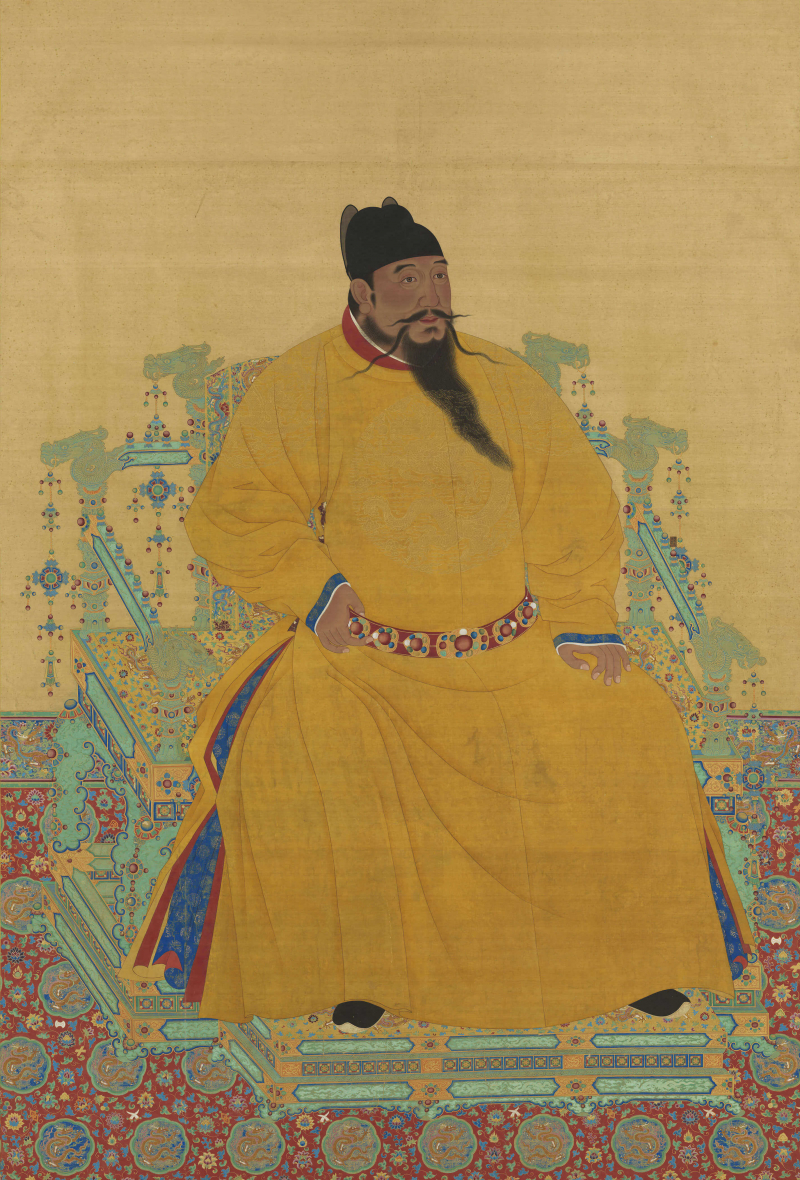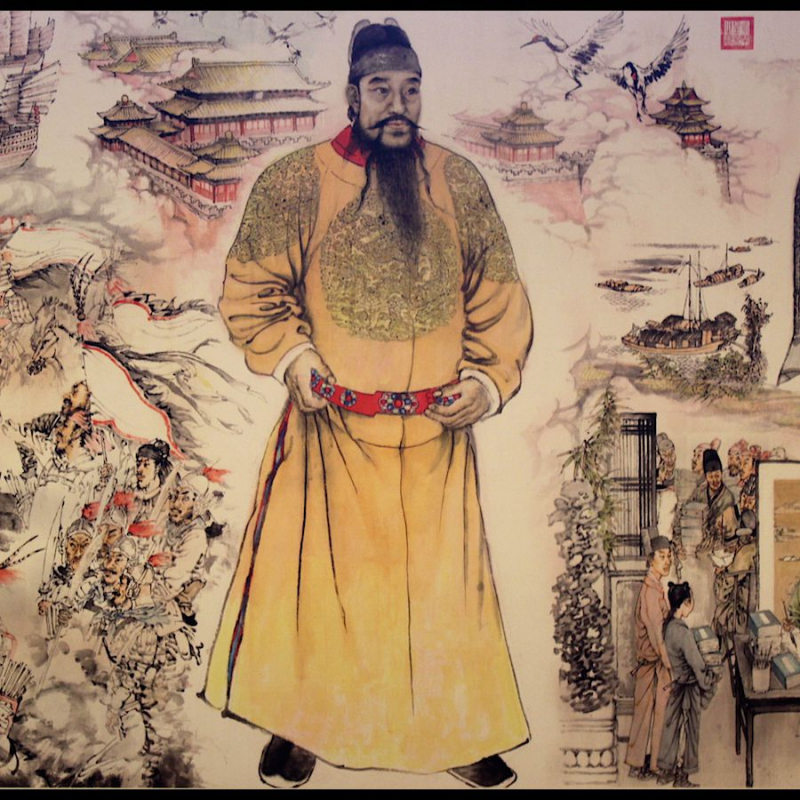Yongle Emperor
The Yongle Emperor (simplified Chinese: 永乐帝; traditional Chinese: 永樂帝; 2 May 1360 - 12 August 1424), personal name Zhu Di (Chinese: 朱棣), was the third Emperor of the Ming dynasty, reigned from 1402 to 1424.
Zhu Di was the fourth son of the Hongwu Emperor, the Ming dynasty's founder. In May 1370, he was enfeoffed as Prince of Yan, with the capital of his princedom at Beiping (modern Beijing). Zhu Di was a capable commander in the face of the Mongols. He initially accepted his father's appointment of his eldest brother Zhu Biao and then Zhu Biao's son Zhu Yunwen as crown prince, but when Zhu Yunwen ascended to the throne as the Jianwen Emperor and began executing and demoting his powerful uncles, Zhu Di found a reason to rebel against his nephew. Zhu Di survived the initial attacks on his princedom and drove south to launch the Jingnan campaign against the Jianwen Emperor in Nanjing, aided in large part by eunuchs mistreated by the Hongwu and Jianwen Emperors, who both favored Confucian scholar-bureaucrats. In 1402, he successfully overthrew his nephew and took control of the imperial capital, Nanjing, after which he was proclaimed Emperor and took the era name Yongle, which means "perpetual happiness."
Eager to establish his own legitimacy, Zhu Di annulled the Jianwen Emperor's reign and launched a massive campaign to destroy or falsify records pertaining to his childhood and rebellion. This included a massive purge of Confucian scholars in Nanjing and the eunuch secret police being given extraordinary extralegal authority. One favorite was Zheng He, who used his power to launch major exploration voyages into the South Pacific and Indian Oceans. Due to the difficulties in Nanjing, the Yongle Emperor re-established Beiping (modern-day Beijing) as the new imperial capital. He restored and reopened the Grand Canal and oversaw the construction of the Forbidden City between 1406 and 1420. He was also in charge of the Nanjing Porcelain Tower, which was considered one of the world's wonders until it was destroyed by Taiping rebels in 1856. The Yongle Emperor greatly expanded the imperial examination system in place of his father's use of personal recommendation and appointment as part of his ongoing attempt to control the Confucian scholar-bureaucrats. During his reign, these scholars completed the massive Yongle Encyclopedia.
While personally leading a military campaign against the Mongols, the Yongle Emperor died. He was laid to rest in the Changling Mausoleum, the central and largest of the Ming tombs north of Beijing.












